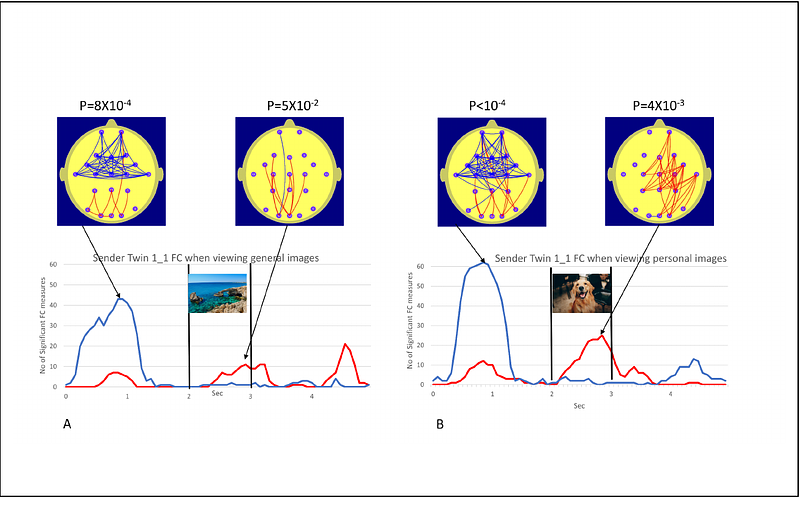Brain Functional Connectivity Correlates of Anomalous Interaction Between Sensorily Isolated Monozygotic Twins

Brain Functional Connectivity Correlates of Anomalous Interaction Between Sensorily Isolated Monozygotic Twins
Silberstein, R. B.; Bigelow, F. J.
AbstractThis study examined brain functional connectivity (FC) changes associated with possible anomalous interaction between sensorily isolated monozygotic twins. Brain FC was estimated using the Steady State Visual Evoked Potential-Event Related Partial Coherence (SSVEP-ERPC) methodology. Five twin pairs served twice as participants with an average interval between sessions of 67 days. In each recording session, one twin, the Sender, viewed a randomized set of 50 general images and 50 personally relevant images, whilst the other twin, the Receiver, viewed a static personally relevant image for the entire duration of the session. Images were presented to the Sender on the screen for 1.0sec with the interval between successive images varied randomly between 4.0 and 8.0 sec. It was hypothesized that anomalous interactions would be indicated by statistically significant receiver FC changes when those changes are determined using the sender image appearance times. Receiver FC changes were calculated from the appearance times of the images as viewed by the Sender. For each twin serving as Receiver, FC components were separately analysed for the general and personal images, yielding 38 observations (19 twin pairs by 2 conditions). The hypothesis was confirmed in that 12 of the 38 observations yielded statistically significant Receiver FC increases (10 cases) or decreases (4 cases) at the p<0.01 level only when trials were synchronized to the Sender image appearance times. Overall, this effect was significant at the p=4X10-8 Df=175. To the best of our knowledge, this is the first study reporting statistically significant FC changes indicative of anomalous interactions between two sensorily isolated individuals.